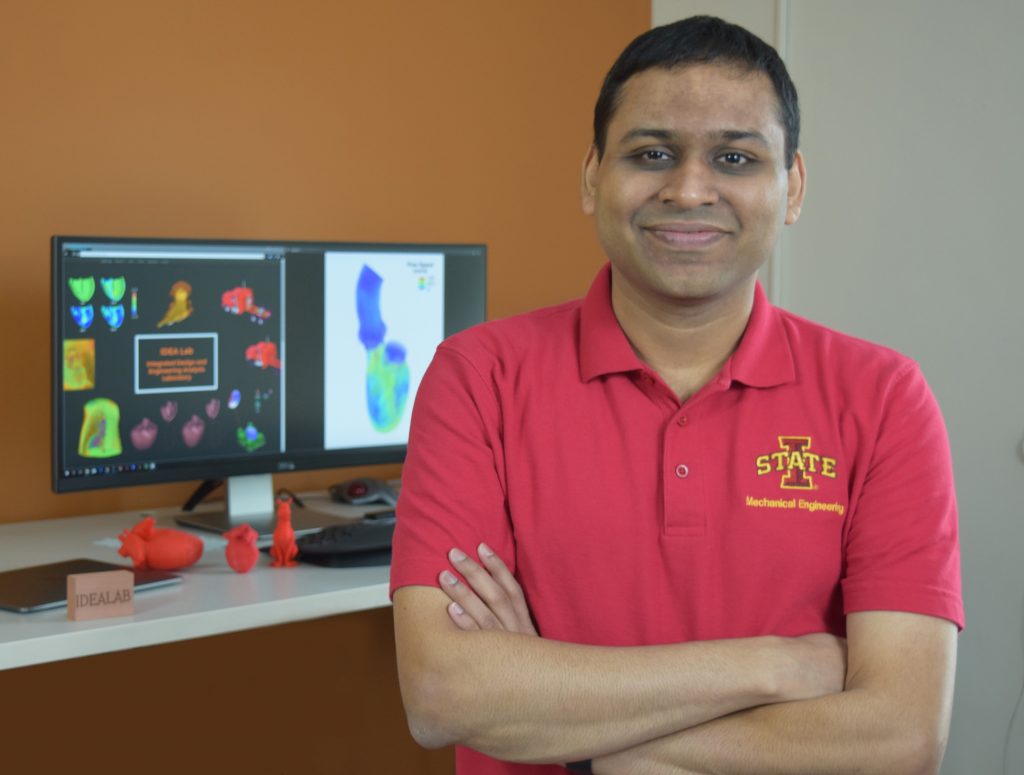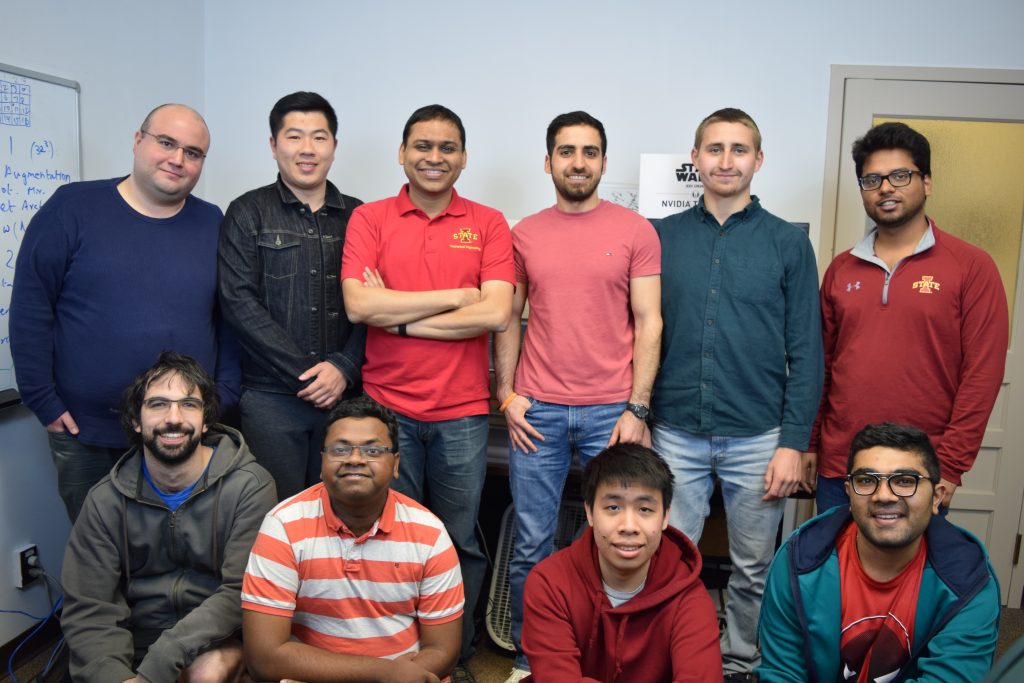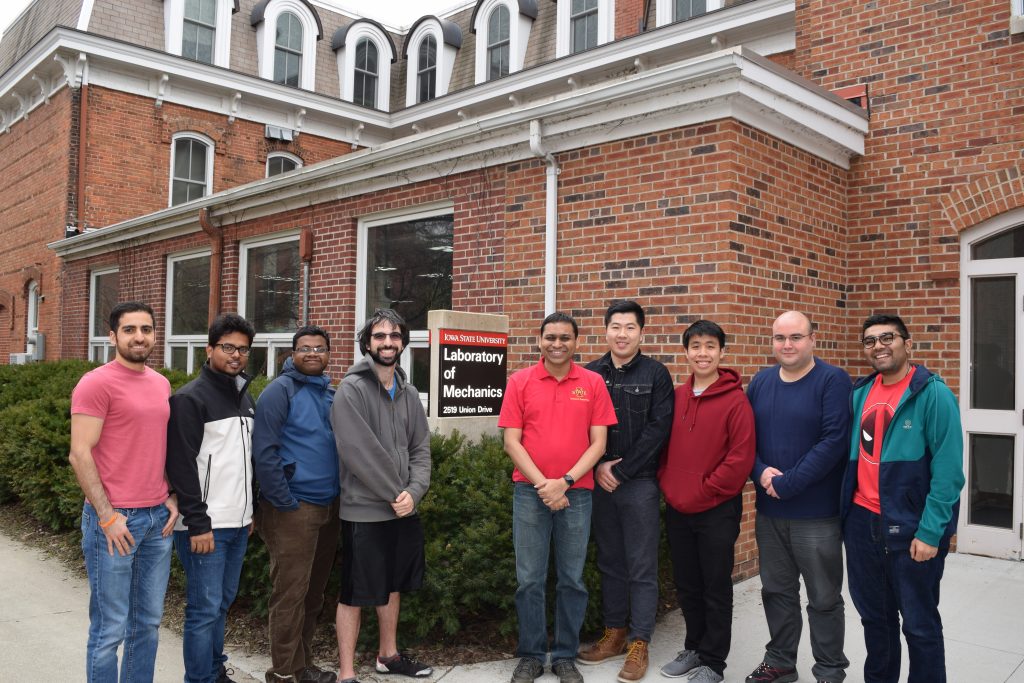
An upcoming research project by a mechanical engineering faculty member will use computational modeling to improve treatment processes for various cardiovascular diseases.
Adarsh Krishnamurthy, an assistant professor of mechanical engineering, recently received a CAREER award from the National Science Foundation (NSF). Krishnamurthy is one of three ME researchers at Iowa State to receive the award this year, and is one of seven in the entire College of Engineering. The award will provide him with $500,000 over the next five years for his project entitled “GPU-Accelerated Framework for Integrated Modeling and Biomechanics Simulations of Cardiac Systems.”
“The overarching goal of this research is to advance the state-of-the-art technology in translational medicine with the help of computational modeling and interactive analysis tools that will improve the basic understanding of the cardiac muscle and facilitate personalized treatment of cardiovascular diseases in patients,” Krishnamurthy said.
The research will focus on creating novel computational methods and tools to automate simulation and analysis of patient-specific cardiac systems resulting in optimized cardiac therapies and developing advanced multiscale methods to model muscle contraction and growth that will help in advancing knowledge about disease and therapeutic mechanisms.
According to data from the Centers for Disease Control and Prevention (CDC), heart failure affects 5.7 million Americans which poses a severe burden on the healthcare system. Current treatment for heart failure is mainly based on the patients’ severity of their symptoms. However, identifying patients who will best respond to a particular therapeutic intervention is difficult, and there is an urgent need for clinical decision support tools that help cardiologists optimize patient response.

Krishnamurthy said that computational models, developed from patient-specific clinical data, can help refine the diagnosis. His proposed research project will focus on developing predictive computational models that can be used to explain the different mechanisms of heart failure.
“One of the main challenges in developing patient-specific models are the lack of tools to systematically generate the patient-specific geometry and tune the parameters of the model to match baseline cardiac characteristics of the patient,” said Krishnamurthy. “As part of this research we will build computational tools that facilitate the generation of patient-specific cardiac models from clinical data – such as CT or MR images and pressure measurements – with minimal user intervention that can replicate the baseline characteristics of the patient and can ultimately be used to personalize heart failure intervention therapies.”
Krishnamurthy’s research also aims to bridge GPU-accelerated modeling and simulations with biomedical engineering. Through subject-specific modeling and the resulting data, bioengineers and other medical professionals will be able to better understand complex heart diseases in humans as well as in different species.
While this research has applications that extend nationally and even internationally, it can also have a direct impact in Iowa where heart disease has been the state’s leading cause of death since 1920, according to data from the Iowa Department of Public Health. Through this research Krishnamurthy said he would like to better pinpoint the regional differences that lead to higher rates of heart disease in Iowa.
In addition to its application within the fields of engineering and medicine, the computational models developed from this research can serve as educational tools. For example, an animation of a beating heart can be used to explain concepts such as the different stages of the heart cycle, pressure volume loops, and other concepts both to engineering as well as medical students.
“The broader impacts of the proposed work can be divided into educational tools for students and for the general public,” said Krishnamurthy. “The outcomes of this project will bear significant impact on numerous applications in mechanical engineering, and will benefit researchers in both academia and industry.”
